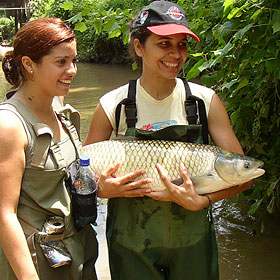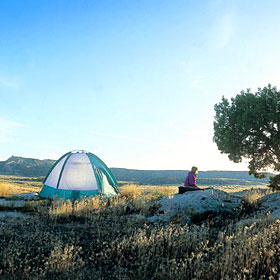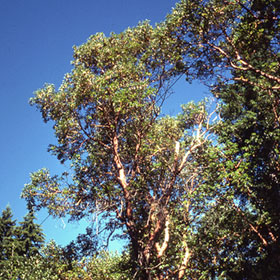F&NR Is A Wide And Varied Field
Forestry and Natural Resources encompasses 8 major sub-disciplines, shown below. Click to see careers and profiles of people already in the field for each sub-discipline.
-

Fish and Wildlife Management
You will develop the biological and ecological background needed to manage and sustain healthy populations of fish and wildlife. Professionals in this area work with government, industry and private organizations to insure fish and wildlife conservation objectives are met. -

Parks, Recreation and Tourism
Parks, recreation and tourism deals with the human dimensions of natural resource management, seeking to understand the various different ways in which people connect with, and relate to, nature; thus promoting a love and respect for the environment around us and the people within it. Graduates in this discipline work in a wide array of venues, from wilderness parks to the inner-city. -

Management and Conservation
Graduates work in an ever-expanding breadth of jobs related to the conservation and management of forests and other renewable natural resources in the US and beyond. From urban, private and industrial forests to conservation easements and wilderness tracks, managers are needed to guide the use and sustainability of our nations natural resources. -

Genetics and Biotechnology
From plant breeding to forensic biology, graduates learn what makes forest organisms grow, adapt, and interact with their environment. Learn to measure and conserve genetic diversity in natural populations, or manage it in tree breeding programs. Study the tremendous potential, and possible risks, of planting genetically engineered trees. Discover the genes that make a tree, a tree!.
-

Forestry and Natural Resources
Studies in this discipline provide a broad exposure to the biological and physical sciences, from the study of water systems (hydrology), forest ecology, tree physiology and insects and disease (entomology and pathology) to forest soils, geology, and microclimatology. -

Environmental Science and Technology
In this highly interdisciplinary field, students use technologies like GIS and sophisticated air and water sampling to conduct environmental monitoring, measurements and assessments, prevent pollution, manage hazardous materials, and guide forest management decisions. Graduates work as GIS experts, environmental scientists and consultants, and laboratory analysts. -

Horticulture
Horticulture is the science of growing and taking care of plants. Plants are an important part of the environment and our lives, sustainable production and use of plants helps the the environment and enriches our communities. -

Wood and Science
Students in wood and paper science learn to design and produce myriad products from nature's most abundant and versatile renewable material. Creative utilization of wood will ultimately dictate whether we can sustainably achieve global standards of living that reflect those of the developed world.
-

Policy and Planning
With a background in forestry/natural resource policy and planning, you will develop strategies for putting your knowledge about environmental and natural resources into action. Policy includes both the big and little decisions needed to manage our environmental and natural resources. These decisions can entail something as big and formal as the federal Clean Water Act or as small as a local recycling program.

